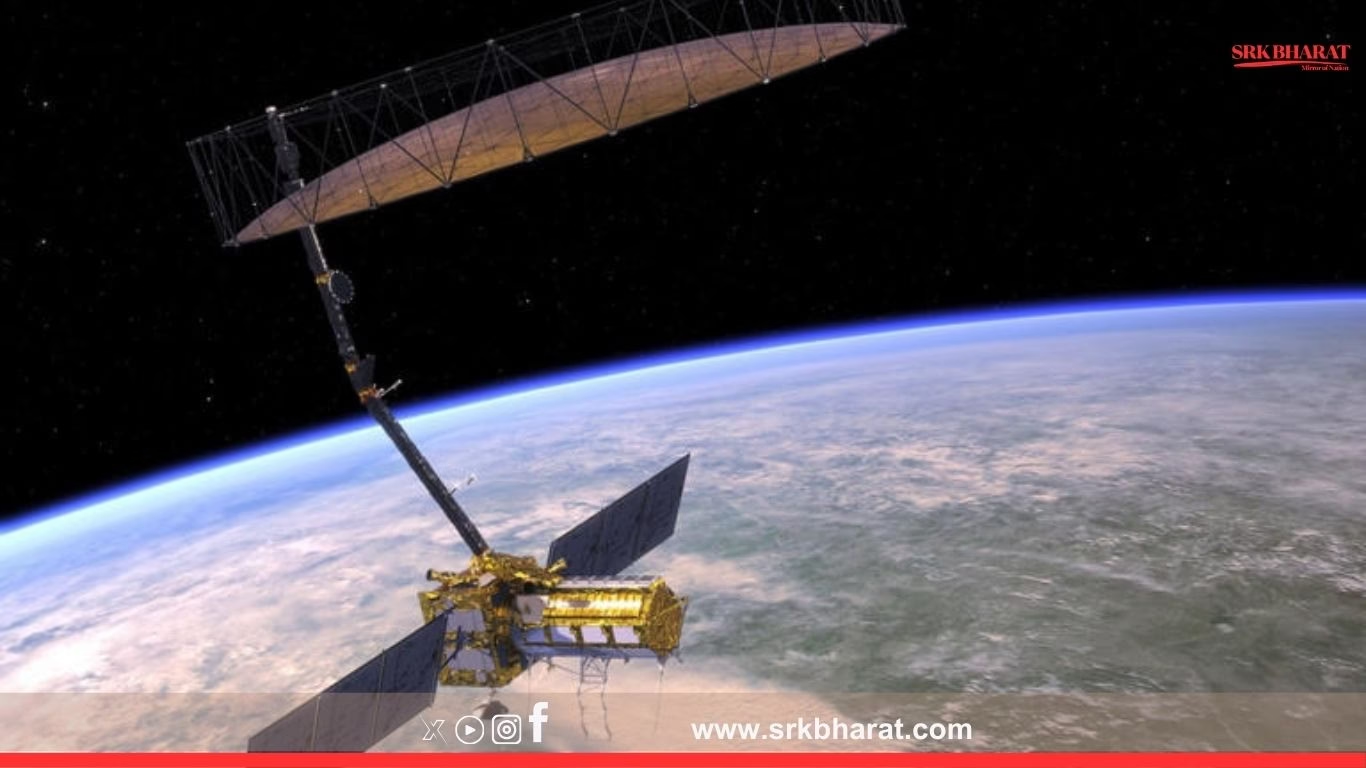In a landmark achievement for international space collaboration, the NASA-ISRO Synthetic Aperture Radar (NISAR) mission has reached a crucial milestone with the successful deployment of its antenna reflector in space. The joint project between the Indian Space Research Organisation (ISRO) and the National Aeronautics and Space Administration (NASA) represents one of the most ambitious Earth-observation missions ever attempted, aiming to provide unparalleled insights into climate change, natural disasters, and planetary processes.
The antenna reflector deployment marks a critical step in operational readiness for the satellite, which is expected to start delivering high-resolution Earth imaging data in the coming months.
What is NISAR?
The NISAR satellite is the first-ever collaboration between NASA and ISRO on a space-based radar imaging mission. With its unique ability to measure changes in Earth’s surface at a millimetric level, the satellite is designed to monitor:
- Glacial movements and ice-sheet dynamics in the polar regions.
- Deforestation and forest biomass tracking.
- Earthquake zones, landslides, and volcanic activities.
- Agricultural practices and water cycle changes.
- Coastal ecosystem vulnerability due to rising sea levels.
By combining NASA’s advanced radar technology with ISRO’s proven space systems, NISAR will provide data that is crucial not only for scientists but also for policymakers, urban planners, and disaster management agencies worldwide.
Antenna Reflector: Why it Matters
The recently deployed antenna reflector is a massive 12-meter-diameter mesh antenna that plays a central role in the mission. The antenna works by sending and receiving radar signals at two frequencies (L-band by NASA and S-band by ISRO), enabling the satellite to observe Earth with remarkable accuracy.
The deployment of this antenna was a high-risk operation, requiring precision and coordination. Its success ensures that NISAR can achieve its primary objective—capturing consistent and high-resolution radar images of Earth, regardless of weather conditions or lighting.
Key Features of NISAR
| Feature | Details |
|---|---|
| Mission Partners | NASA & ISRO |
| Launch Vehicle | GSLV Mk II (ISRO) |
| Radar Bands | L-band (NASA), S-band (ISRO) |
| Antenna Reflector | 12-meter deployable mesh reflector |
| Orbit | Sun-synchronous, 747 km altitude |
| Applications | Climate monitoring, disaster management, agricultural mapping, surface deformation studies |
This unique combination of dual-frequency radars makes NISAR the first radar imaging satellite in the world to operate on both bands simultaneously.
Significance for India
For India, the NISAR mission offers multiple benefits:
- Strengthening space collaboration – Enhances India’s role in global space partnerships.
- Disaster preparedness – Critical for monitoring floods, landslides, and earthquakes in India’s vulnerable regions.
- Agriculture – Supports crop yield estimation and soil moisture monitoring, benefiting farmers and policymakers.
- Climate action – Aids India in fulfilling its climate commitments under the Paris Agreement by providing data-driven insights.
Benefits for Global Science
The NISAR mission is not just about India or the US; it is a truly global mission. Data from the satellite will be made available to the scientific community worldwide, helping researchers track environmental changes and mitigate the effects of natural disasters.
NISAR Compared to Other Earth-Observation Satellites
| Satellite | Country/Agency | Specialty |
|---|---|---|
| NISAR | NASA-ISRO | Dual-frequency radar imaging, large-scale climate and disaster monitoring |
| Sentinel-1 | ESA | Radar imaging for Europe’s Copernicus program |
| RADARSAT-2 | Canada | High-resolution commercial radar imaging |
| RISAT Series | ISRO | National security and agriculture monitoring |
NISAR stands out because of its global coverage, dual-band technology, and collaborative ownership.
Deployment Challenges and Triumph
Deploying a 12-meter mesh reflector in the vacuum of space is not a small feat. The structure had to be folded compactly during launch aboard the GSLV Mk II rocket, and later unfurled in orbit. Engineers from NASA and ISRO conducted years of testing to ensure that the mechanism could work flawlessly in zero-gravity conditions.
The successful deployment validates those years of preparation and ensures that the mission remains on track for its scientific objectives.
Economic and Strategic Impact
The NISAR project is valued at around $1.5 billion, making it one of the most expensive Earth observation missions ever undertaken. While the financial cost is significant, the economic benefits of improved disaster prediction, agricultural insights, and infrastructure planning are expected to far outweigh the investment.
Additionally, the collaboration cements India’s growing role as a trusted global space partner and showcases ISRO’s capability to deliver at par with the world’s leading space agencies.
Future Applications of NISAR Data
Once operational, NISAR’s data can be leveraged in multiple sectors:
- Urban development – Monitoring ground subsidence in rapidly growing cities.
- Infrastructure planning – Assessing risks to roads, bridges, and dams.
- Climate studies – Mapping global carbon cycles and forest biomass.
- Defence and security – Tracking border terrain and monitoring natural changes in conflict-prone regions.
This wide range of applications positions NISAR as a transformative tool for 21st-century Earth management.
Looking Ahead
With the antenna reflector successfully deployed, the next steps involve calibrating the radar instruments, running system checks, and beginning the data collection phase. Scientists expect that within a few months, the satellite will start providing actionable insights.
The success of NISAR will not only advance Earth science but also set the stage for future ISRO-NASA collaborations, potentially in lunar exploration, planetary science, and Mars missions.
Conclusion
The successful deployment of the antenna reflector in space marks a defining moment for the NASA-ISRO Synthetic Aperture Radar mission. It underlines the power of international collaboration in tackling global challenges like climate change, disaster preparedness, and sustainable resource management.
For India, this mission is both a technological achievement and a strategic leap forward, cementing its role in the elite club of spacefaring nations making a global impact. As the world awaits the first images from NISAR, one thing is clear—this mission is set to transform the way humanity observes and understands planet Earth.
Disclaimer: This article is intended for informational purposes only. Technical specifications and mission details may evolve as the project progresses. Readers are advised to refer to official ISRO and NASA announcements for confirmed updates.











